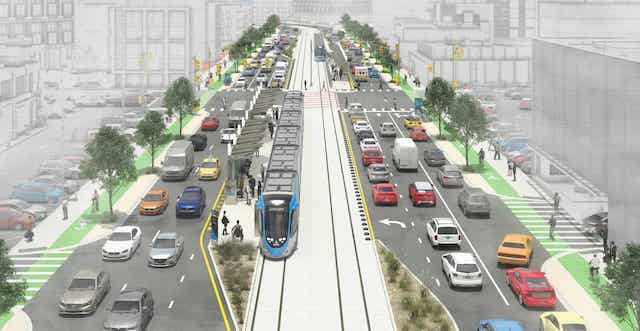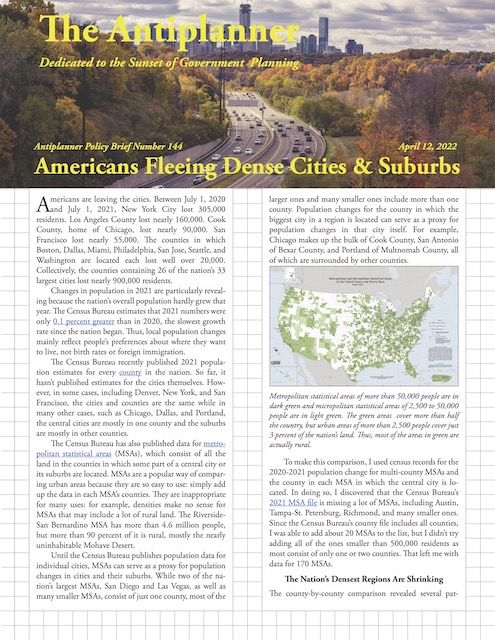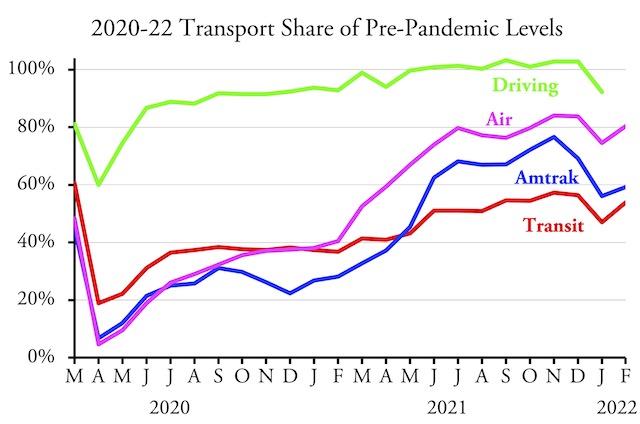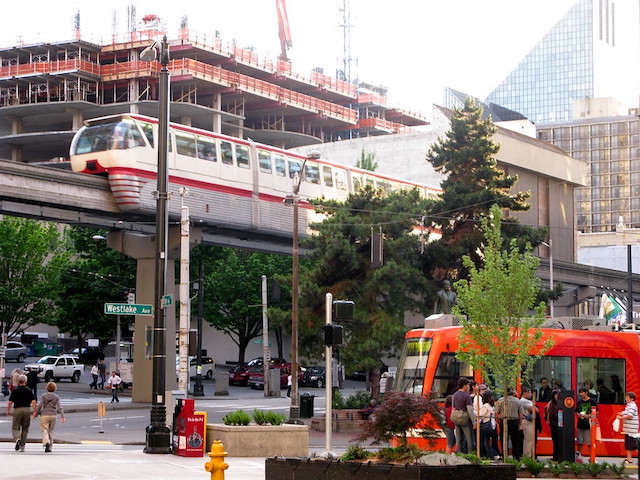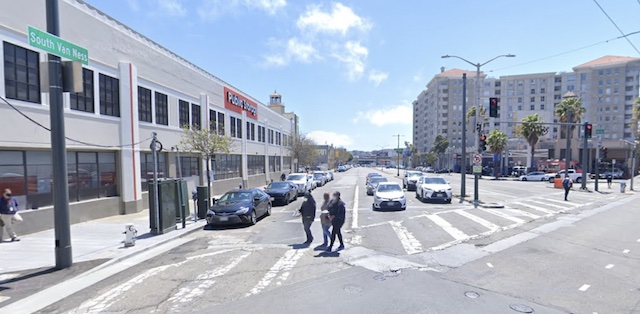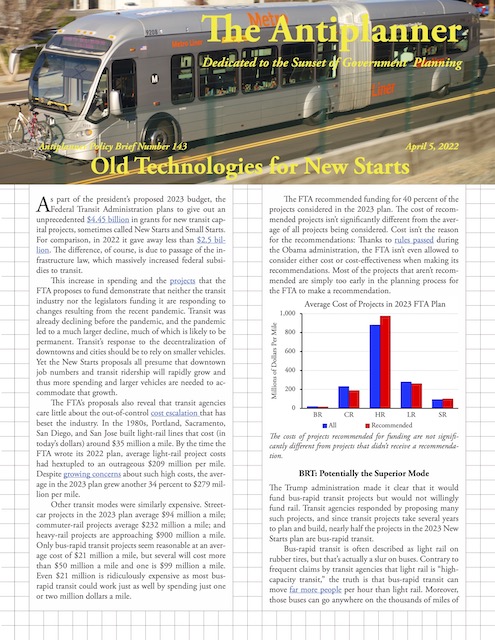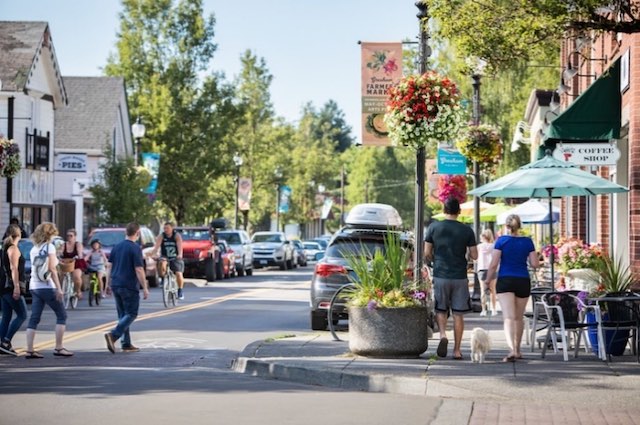The Antiplanner has previously written that light rail should be called lie rail because everything its advocates say about it is a lie. The latest proof comes from Capital Metro, Austin’s transit agency, which now admits that light-rail projects voters approved in 2020 are going to cost at least 78 percent more than originally projected.
Capital Metro persuaded voters to support light rail by claiming it would reduce congestion when in fact it will make it worse by taking lanes away from autos and dedicating them to empty tracks carrying empty light-rail trains.
The original projection, of course, was one of many lies told about the project. Almost every light-rail project ever built has cost far more than the original projections, overruns so systematic that Oxford researcher Bent Flyvbjerg says they are “best explained by strategic misrepresentation, that is, lying.” Other lies included overestimated ridership numbers and the claim that light rail is “high-capacity transit.” Continue reading

